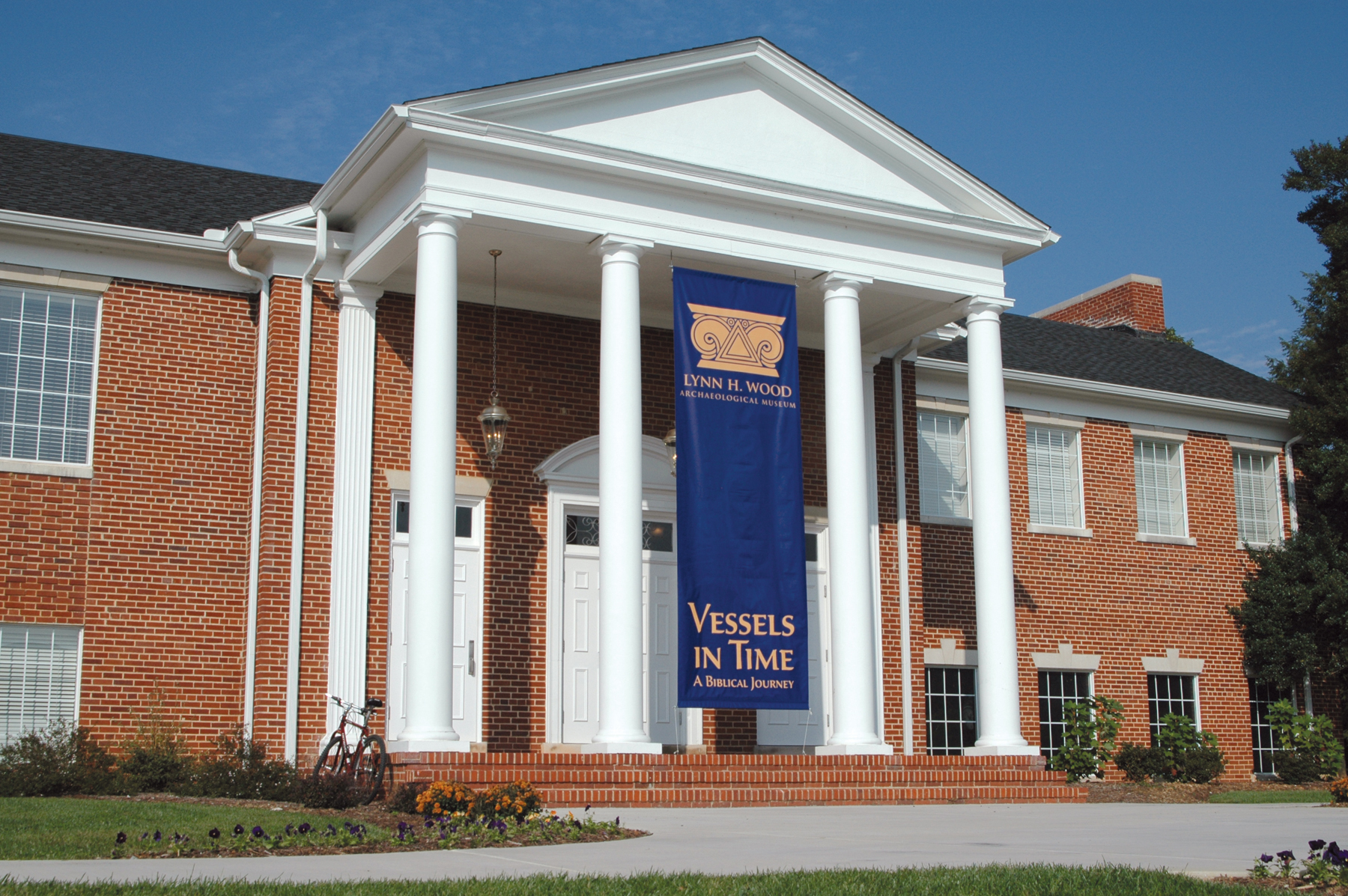
The Battle Over King David
The Battle Over King David
The story of David and Goliath is one of the most memorable in the Bible. The setting
for this legendary battle is the Valley of Elah in the Judean foothills. Today, the
Elah valley has become a battleground for a new controversy, this time concerning
the historical accuracy of the Bible. Archaeological discoveries from biblical Sha’arayim,
known as Khirbet Qeiyafa or the “Fortress of Elah,” are challenging skeptical scholars’
claims that there is no evidence for biblical David and his Kingdom. For the first
time outside of the country of Israel, a sampling of these important artifacts is
on display at Southern Adventist University’s Lynn H. Wood Archaeological Museum.
The exhibition showcases ceramic, stone, and metal objects uncovered at the Khirbet
Qeiyafa excavations from 2007 to 2011. Many of these pieces were uncovered by Southern
Adventist University’s own excavation team who, in partnership with the Hebrew University
of Jerusalem, has been excavating the remains of this fortress-city since 2009. The
objects are on loan from the collection of the National Treasures Department, courtesy
of the Israel Antiquities Authority.
The theme of the exhibition highlighted the scholarly controversy over the historicity of the United Monarchy of Israel. According to some scholars, Saul, David, and Solomon were little more than tribal leaders who ruled a small chiefdom in the highlands of Judah. The biblical description of their kingdom is an exaggerated version of history invented by writers with a political agenda. In the last century, the so-called Solomonic gates were discovered at the biblical sites of Hazor, Megiddo, and Gezer. The Bible (1 Kings 9:15) credits Solomon with rebuilding the fortifications of these three cities. New fortifications uncovered at the Fortress of Elah have provided evidence of a kingdom in Judah during the reigns of Saul and David (c. 1020-980 BC). The exhibition opening was the culmination of a yearlong process to create the first museum exhibition to display the finds of the Khirbet Qeiyafa Archaeological Project. The project, which was started by professor Yosef Garfinkel (Hebrew University of Jerusalem) and Saar Ganor (Israel Antiquities Authority) in 2007, received extensive media coverage since the oldest Hebrew inscription was found at the site in 2008. Documentary crews from National Geographic and the BBC visited the site in 2010 and major news outlets like CNN, Fox News, The New York Times, and the Huffington Post have released various stories as recently as this year. “We have the unique distinction to be the first museum in the world to share these important archaeological finds,” remarked Michael G. Hasel, PhD, curator. “The discoveries at Khirbet Qeiyafa have revolutionized our understanding of the biblical kingdom of Judah and now we have the privilege to share them with our community and the Seventh-day Adventist Church."
Exhibition highlights included a collection of stamped and finger-impressed jar handles, stamp and scarab seals, and bronze and silver coins from the Persian, Hellenistic, and Roman periods. Famous artifacts like the potsherd with the Hebrew inscription (Qeiyafa Ostracon) and a portable stone shrine found in 2011, that were not available for loan, were replicated for the exhibition. Also on display was a scaled model of one of the two gates that give the city its name (Sha’arayim means “two gates” in Hebrew).
The special exhibition was free of charge and open to the public during regular museum hours (see our website for hours, directions, and other information). The exhibition was on display from November 2012 to May 2015.

The theme of the exhibition highlighted the scholarly controversy over the historicity of the United Monarchy of Israel. According to some scholars, Saul, David, and Solomon were little more than tribal leaders who ruled a small chiefdom in the highlands of Judah. The biblical description of their kingdom is an exaggerated version of history invented by writers with a political agenda. In the last century, the so-called Solomonic gates were discovered at the biblical sites of Hazor, Megiddo, and Gezer. The Bible (1 Kings 9:15) credits Solomon with rebuilding the fortifications of these three cities. New fortifications uncovered at the Fortress of Elah have provided evidence of a kingdom in Judah during the reigns of Saul and David (c. 1020-980 BC). The exhibition opening was the culmination of a yearlong process to create the first museum exhibition to display the finds of the Khirbet Qeiyafa Archaeological Project. The project, which was started by professor Yosef Garfinkel (Hebrew University of Jerusalem) and Saar Ganor (Israel Antiquities Authority) in 2007, received extensive media coverage since the oldest Hebrew inscription was found at the site in 2008. Documentary crews from National Geographic and the BBC visited the site in 2010 and major news outlets like CNN, Fox News, The New York Times, and the Huffington Post have released various stories as recently as this year. “We have the unique distinction to be the first museum in the world to share these important archaeological finds,” remarked Michael G. Hasel, PhD, curator. “The discoveries at Khirbet Qeiyafa have revolutionized our understanding of the biblical kingdom of Judah and now we have the privilege to share them with our community and the Seventh-day Adventist Church."
Exhibition highlights included a collection of stamped and finger-impressed jar handles, stamp and scarab seals, and bronze and silver coins from the Persian, Hellenistic, and Roman periods. Famous artifacts like the potsherd with the Hebrew inscription (Qeiyafa Ostracon) and a portable stone shrine found in 2011, that were not available for loan, were replicated for the exhibition. Also on display was a scaled model of one of the two gates that give the city its name (Sha’arayim means “two gates” in Hebrew).
The special exhibition was free of charge and open to the public during regular museum hours (see our website for hours, directions, and other information). The exhibition was on display from November 2012 to May 2015.
